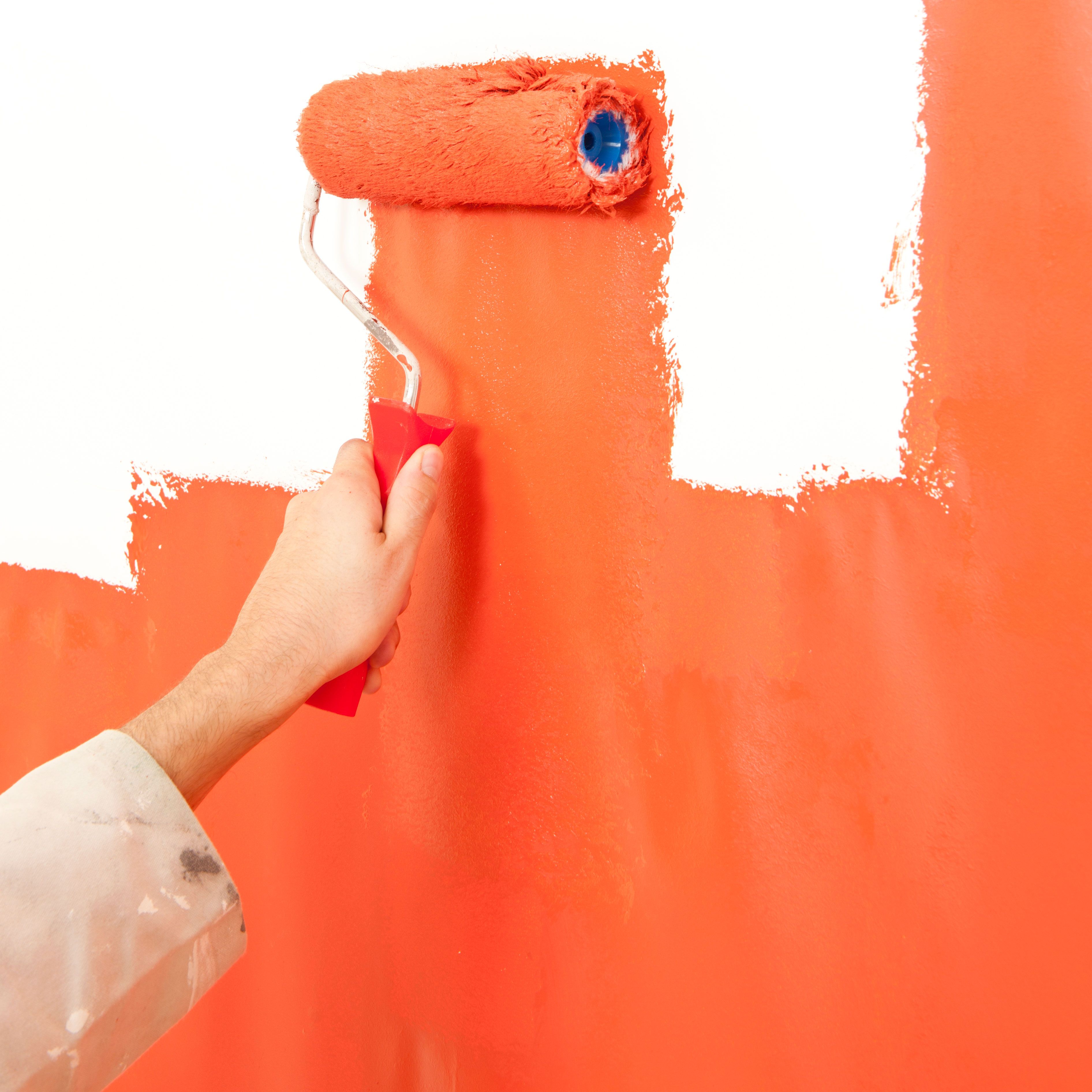The ins and outs of painting
Contact
We would be happy to send you a cost estimate free of charge.
A beautiful home starts with skilled paintwork! It’s by far the cheapest way to give your house a complete make-over! Before starting to paint, you should read up on preparing the surfaces and decide about painting techniques, colours, trends and finishing touches. Every room in your house can be painted. Using the proper tools, the job will be finished in no time!
Requirements:
-
- scrapers or chisels
- masking tape
- liquid timber/wood-fill
- ammonia water
- putty/filler
- putty knife
- sandpaper
- brushes or rollers
- paint

Preparing to paint indoors and outdoors
If you intend to start by filling in holes, or if you need to paint window frames, doors or cupboards, you should first remove all handles, locks and other fittings. If there’s any rotten wood, chisel it away until you reach the solid wood underneath, and then fill up the hole with liquid timber (wood-fill). Use a paint scraper to remove any peeling layers of old paint.
The next step to make sure that the new paint adheres well to the surface is to degrease old paint layers and/or sand the surface of the wood. Use ammonia water to clean the surface, and sand it with waterproof sandpaper no. 250. Remember to wear safety goggles and a coverall to protect yourself from dust, dirt and ammonia fumes.
Surfaces that don’t need to be painted (yet), like window frames, door posts and power sockets, can be covered with masking tape. Make sure you remove the tape as soon as you’re done painting! If you leave it on too long, it’s a lot of work to scrape off all the bits of glue and tape! Finally, make sure the room you’ll be working in is dust-free.
Generally, once the preparations are done, you’ll usually apply a coat of primer first and then fill in any holes, but some brands of filler recommend doing it the other way around. Make sure you read the instructions before you start! Use white primer to paint over light colours and grey primer to paint over dark colours, but make sure your primer coat isn’t too thick.
Every filler job requires a different kind of filler:
Indoor use: holes and cracks in stone walls, foamed concrete, sand-lime bricks, plasterboard, concrete → red band or gold band.
Outdoor use: holes and cracks in walls, concrete and sand-lime brick → lime mortar plaster.
Put some filler on a broad putty knife and spread it over the surface to be filled, using controlled movements. Remove excess filler immediately. Let the filler dry, then apply an extra layer if necessary. Lightly sand the filled section.
Painting indoors
First measure the size of the room that needs to be painted (LxWxH) to determine how much paint you’ll need. For indoor paintwork, you can choose between acrylic paint and alkyd paint. Alkyd paint is more frequently used by professional painters. It achieves a more beautiful result than acrylic paint, but it can only be thinned with turpentine, increasing its environmental impact and intensifying the paint smell. It’s all up to you!
Paint comes in all sorts of colours and in various sheens: high-gloss, silk gloss and matt. Depending on the type, you’ll need to apply two layers of paint to achieve full coverage. Tip: poke a few holes in the lid of the paint can and pour the paint into the paint tray through the holes. This makes it easier to pour a small amount of paint.
For covering and transparent enamels, stains and acrylic paints, a short-pile mohair roller is best. A paintbrush is generally used for corners and narrow sections. To prevent bristles from coming loose from the brush and sticking to the walls, make sure you buy good-quality mohair paintbrushes. Start with painting the windows and the doors, working from the top down as much as possible.
If you need to stop painting for a short period, you can simply leave the brush or roller in the paint tray or put them in water. After you finish painting, clean the brush and roller thoroughly by rubbing any excess paint off against metal mesh and then rinsing them off with a special brush cleaner. If you have any paint left, don’t put it in the normal bin; leftover paint needs to go into the chemical waste bin at the the waste collection centre. After the painting tools have been cleaned, they can both be sealed in airtight bags; optionally, you could hang the brush with the bristles pointing downward. All paint containers must be closed completely; make sure they’re airtight.
Painting outdoors
For paintwork on the outside of your house, use professional outdoor paint (brand: Sigma or Sikkens), or wood stain or oil to treat wooden garden furniture, etc. The preparation process is about the same as for painting indoors, but you do need to take the weather into account. Also remember that you’ll need to touch up the outdoor paintwork every 3 to 5 years due to exposure to weather and dirt.
